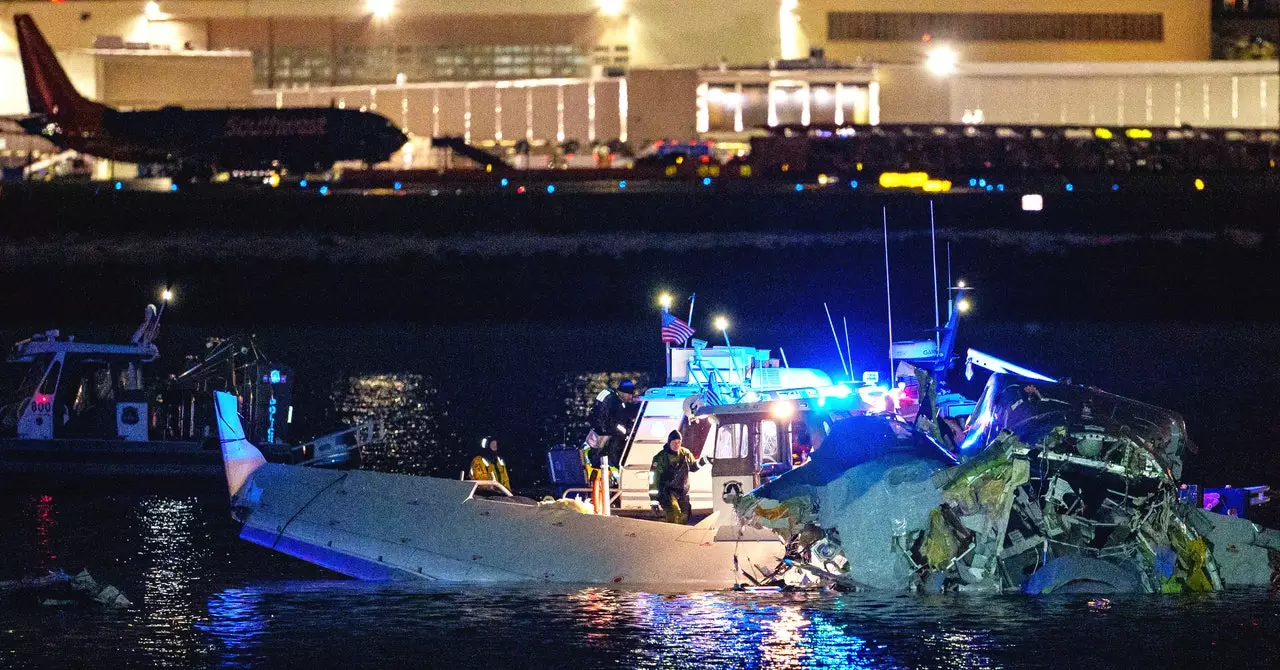Late Wednesday evening, a tragic event unfolded in Washington, D.C., marking a somber moment in U.S. aviation history. A military helicopter, an Army UH-60 Black Hawk, collided with a commercial passenger airplane, a Bombardier CRJ-700, causing both to plunge into the frigid waters of the Potomac River. The accident, which resulted in significant loss of life, has raised pertinent questions about the safety protocols governing aviation, as well as the potential human errors that may have precipitated this catastrophe. With 64 passengers aboard the CRJ-700, where regional carrier PSA Airlines operated on American Airlines’ behalf, the crash has been termed the most deadly U.S. aviation incident in over a decade.
The preliminary analysis of the incident suggests that human error may have played a central role in the crash. Marco Chan, a former pilot and current head of pilot programs at Buckinghamshire New University, noted that 80% of aviation accidents worldwide are attributed to human factors. This statistic brings to light the critical importance of effective communication, adherence to safety protocols, and the comprehensive training of pilots and air traffic controllers. The existing shortage of qualified personnel in the aviation sector is highlighted as a worrying trend that may have direct implications for operational safety. While air traffic has rebounded post-pandemic, the workforce has not reached pre-crisis levels, echoing concerns among industry experts about adequate coverage and operational safety.
Eyewitness accounts and grainy video footage have provided some visual context to the collision. The sighting of the helicopter overtaking the commercial airplane minutes before impact raises concerns about situational awareness among pilots. Although air traffic control had directed the helicopter to monitor the flight, the exchange indicates a potential lapse in vigilance. This situation raises questions about whether both aircraft interacted through proper communication channels. The dynamics of the accident reveal a narrative that is as much about human latency and miscommunication as it is about technical or mechanical failures.
The timing of the flight path changes, in which the passenger airplane switched to a shorter landing runway, adds complexity to the developments leading up to the collision. While retired Brigadier General John Teichert argued that such a maneuver shouldn’t have caught the helicopter off-guard, it nevertheless illustrates the myriad factors that can lead to misjudgment in critical situations.
A key theme in this tragedy is the communication barriers that exist within military and civilian aviation. Military aircraft often operate on separate frequencies, which can lead to situations where pilots are unaware of nearby civilian flights. This disjointed communication is a critical factor in maintaining aircraft safety. There is also the possibility of jammed transmissions—an essential dynamic in modern air traffic control—that can further obfuscate communication and exacerbate the risk of collisions.
As investigations continue, a deeper examination of the communication protocols between military and civilian air traffic is warranted. Enhancements in these areas can potentially foster improved safety practices and reduce the risk of future accidents.
The ramifications of this tragic accident extend far beyond the immediate loss of life. With the spotlight now cast upon military and civilian aviation safety, there is an urgent call for a reevaluation of existing protocols. This tragic mishap serves as a poignant reminder of the delicate balance in the decorated field of aviation and raises the stakes on ensuring comprehensive training for pilots and air traffic controllers alike. Enhanced training programs, improved technology, and rigorous safety checks may be pivotal steps toward preventing future incidents.
As the investigation unfolds, a collective call to action emerges within the aviation community. By learning from the errors of this incident, it may be possible to establish more stringent guidelines that not only address staffing shortages but also emphasize the importance of communication and protocol adherence to mitigate risks associated with human error.

